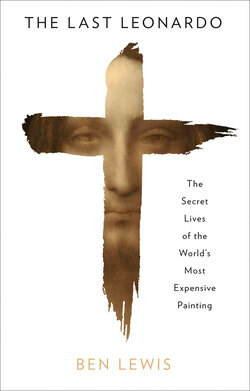Читать книгу The Last Leonardo - Ben Smith Lewis - Страница 7
PROLOGUE The Legend of Leonardo
ОглавлениеCenturies ago, in an age when the world was still ruled by monarchs and dukes and countesses dressed in velvet and golden brocade, there lived a man of illegitimate birth, as warm-hearted in his disposition as he was boundless in his curiosity, fierce in his intellect and skilful with his hands. This man was engineer, architect, designer, scientist and painter – the greatest painter, say many, who had ever lived. A genius, say others, who had brought the modern world into being. His pictures were both real and ideal, more beautiful than anything ever seen before. He studied the natural world in its tiniest details, from the leaves on trees to the paws of bears, and in its hidden rules, such as the proportions of the human face and body. He looked far and peered close, sketching the pale horizons of mountains and peeling back men’s skin so he could see the muscles and arteries that lay beneath.
But this artist was also an enigma. When he died, he left riddles and tricks for those who wished to cherish his memory and preserve his legacy. Sometimes his masterpieces were painted with colours that faded or crumbled even before he had finished the work; others were sealed with varnishes that made them darker and darker with the passing of decades. Like many great men, he seemingly cared little for the gift God had given him, painting little and slowly, and instead burying himself in the notebooks that he filled with scribbles of magnificent ideas, which he had neither the patience nor the technology to build. He made fewer paintings than any other great artist in history, and even fewer have survived: at most only nineteen.
In the centuries that followed his death, people yearned to possess more of his work than they had; there were never enough pictures by this artist to satisfy the world’s craving for his images. Myths and theories proliferated about the pictures that had been lost, hidden or painted over. In the institutes of learning devoted to the arts, there was no higher calling than the study of this artist’s work; and among those scholars who studied his art, there was no greater glory than discovering a lost or forgotten painting, drawing or sculpture by his hand.
The stakes were high – and, if you fell on them, sharp. The artist never signed or dated his work. He had many pupils, whom he taught to paint as skilfully as himself, in exact imitation of his style, and they produced hundreds of copies of his works. Occasionally, a contemporary recorded, he would add the final touches himself – a fact which further confused posterity. Knowing the risks, the wisest scholars sought to resist the temptation to identify a lost painting, preferring to explore an overlooked fragment or a half-finished sentence in the artist’s notebooks. But, eventually, many succumbed to the allure of buried treasure. The corridors of art history libraries were full of the wailing ghosts of professors whose life’s work had been destroyed by the chimera of a ‘new’ Leonardo they believed they had found; the headlines, news reports and celebrations that greeted their discovery were replaced within years, if not months, by academic derision for what was now revealed to be a forgery or copy, betrayed by paint that had been applied too loosely, or colours pronounced too dominant, or in which there was a trim in the costume that belonged to an incongruous era.
This artist, Leonardo da Vinci, was just like the sun. He was the brightest planet in the art history cosmos. Scholars who flew too close to him found their books suddenly aflame and themselves engulfed in the fire of ambition. Yet still their attempts continued …
